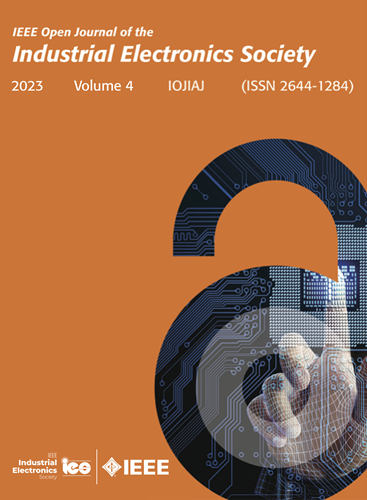一种基于混合并网变流器的多功能消弧装置
IF 7.2
1区 工程技术
Q1 AUTOMATION & CONTROL SYSTEMS
引用次数: 0
摘要
由于灭弧装置在正常工作和单线接地故障时电压幅值不同,存在成本高、模块利用率低的问题。提出了一种具有无功补偿和故障调节能力的集成并网变流器。本文首先介绍了IGCC的拓扑结构和运行机制。通过对传统消弧装置的改进,形成了中性点钳位和级联h桥相结合的通用装置。通过在NPC模块中增加第四支腿并与消弧电感连接,实现了两种结构的集成。NPC单元的接入不仅减少了传统灭弧装置的模块数量,而且为灭弧装置和无功补偿装置提供了一个集成端口。其次,对IGCC主、无源部分参数进行优化设计,保证IGCC稳定运行。此外,与现有方案相比,证明了IGCC在成本和体积上的优势。最后,仿真和实验结果验证了所提拓扑和功能的正确性、可行性和有效性。本文章由计算机程序翻译,如有差异,请以英文原文为准。
A Multifunctional Arc Suppression Device Based on Hybrid Grid-Connected Converters
Since the voltage amplitude of the arc suppression device is different during the normal operation and single line-to-ground fault, the problems of high cost and low module utilization rate are serious. An integrated grid-connected converter (IGCC) with reactive power compensation and fault regulation ability is proposed. First, the topology and operation mechanism of IGCC are introduced in this article. A common unit combining neutral point clamped (NPC) and cascaded H-bridge is formed by improving the traditional arc suppression device. By adding a fourth leg in the NPC module and connecting with the arc suppression inductance, the integration of the two structures is realized. The access of NPC unit not only reduces the number of modules of traditional arc suppression device, but also provides an integrated port for arc suppression device and reactive power compensation device. Second, the parameters of active and passive part of IGCC are optimally designed to ensure the stable operation of IGCC. In addition, compared with existing schemes, the superiority of IGCC in cost and volume is proved. Finally, the correctness, feasibility and effectiveness of the proposed topology and functions are verified by the simulation and experiment results.
求助全文
通过发布文献求助,成功后即可免费获取论文全文。
去求助
来源期刊

IEEE Transactions on Industrial Electronics
工程技术-工程:电子与电气
CiteScore
16.80
自引率
9.10%
发文量
1396
审稿时长
6.3 months
期刊介绍:
Journal Name: IEEE Transactions on Industrial Electronics
Publication Frequency: Monthly
Scope:
The scope of IEEE Transactions on Industrial Electronics encompasses the following areas:
Applications of electronics, controls, and communications in industrial and manufacturing systems and processes.
Power electronics and drive control techniques.
System control and signal processing.
Fault detection and diagnosis.
Power systems.
Instrumentation, measurement, and testing.
Modeling and simulation.
Motion control.
Robotics.
Sensors and actuators.
Implementation of neural networks, fuzzy logic, and artificial intelligence in industrial systems.
Factory automation.
Communication and computer networks.
 求助内容:
求助内容: 应助结果提醒方式:
应助结果提醒方式:


